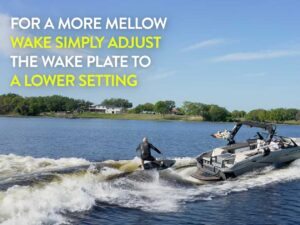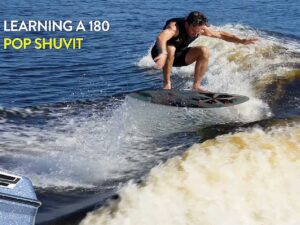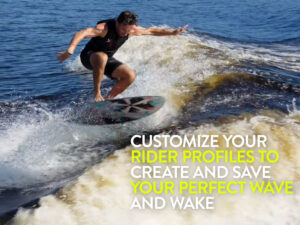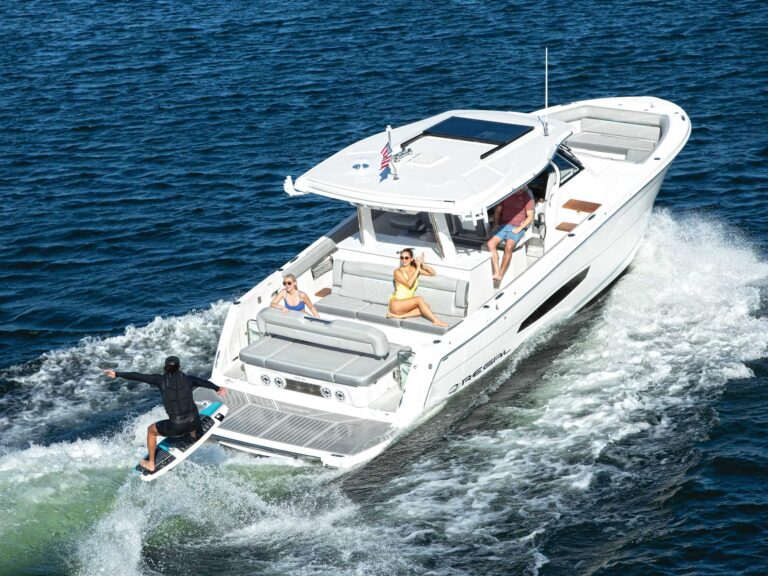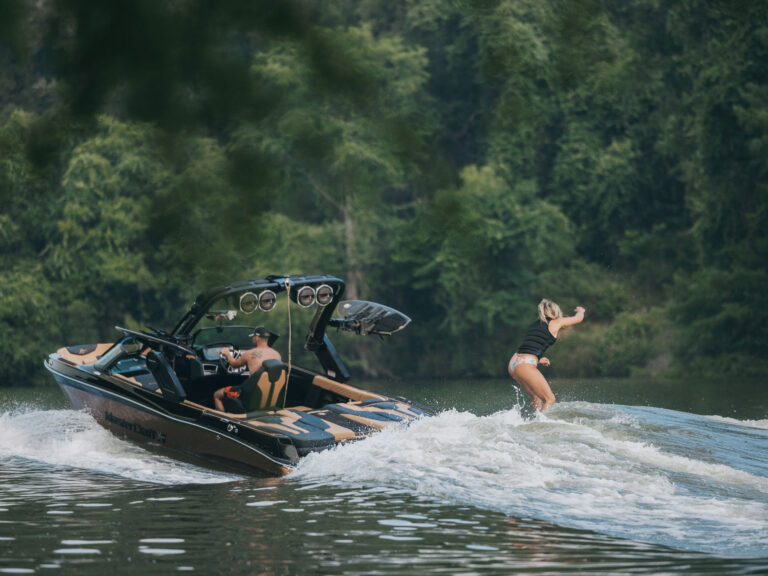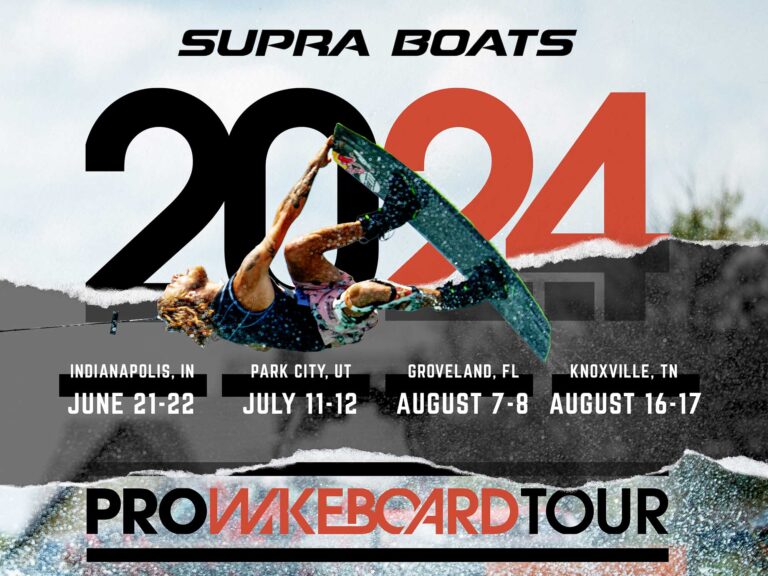Time magazine is conducting an on-line poll of the 100 worst ideas of the century. By far, coming in at No. 1 is Prohibition. The 1919 law forbidding the manufacturing, transportation and sale of alcoholic liquors except for medicinal and sacramental purposes would probably rank on my list of crappy ideas, especially if someone imposed it today (just ask a smoker living in California). But what surprised me was the 20th-century invention sitting in space No. 2 – personal watercraft: Jet Skis, Sea-Doos, WaveRunners, Kawasakis, PWCs. Whatever you call them, they’ve logged enough votes so far to make them the second-worst thing next to no drinking in the last 100 years. I mean, even the Ku Klux Klan, Spandex in plus sizes, Jerry Springer and the Y2K bug have garnered fewer votes! Seems as though the general population has it out for the high-pitched, whining craft affectionately called “lake roaches.”
What’s that got to do with wakeboarding, you ask? A lot, considering that given the opportunity to go wakeboarding behind a PWC, most of us purists would not-so-politely decline. No wake. No boatload of hot chicks. No tunes. Did we mention no wake? Despite the dogged hours Sea-Doo has spent on the pro tour trying to prove otherwise, personal watercraft seem to represent everything wakeboarding isn’t and couldn’t be.
That was then.
Turns out, most of us are wrong. Considering the upward climb of boat prices and the nationwide crackdown on wakes (we have to honor the environment), personal watercraft may become the only way you can wakeboard close to home – a mind-numbing thought at best. Fortunately, we’ve come to realize that there are some situations where PWCs are better than boats to ride behind.
Welcome to the new millennium.
Surf, sun and sand.
Everyone loves the beach. And while a lot of people in the Midwest cry poor when we run wakeboarding in the surf stories, the fact remains that over 20 states in the US have some kind of coastal property. That’s not counting the lapping, wind-blown waves of the Great Lakes either.
Wakeboarding in the surf is fun, aggressive and soulful. If you’re a surfer, you can explore all new kinds of tow-ins and sample surf conditions that would normally keep you beachside. If you’re a wakeboarder, surf opens up a whole new realm of possibilities. What would be normal wake-to-wake grabs can become stylie floaters. Lip slides and butter slides become aggressive carves and cutbacks. And the air! The first time you get popped off a chest-high swell, it’s like the first time all over again.
The key to surf is the driver. He or she needs to be able to read the wave, specifically its breaking pattern, in order to get lined up on a swell before it becomes a breaking wave. (basically, putting you at the peak of the action in order to hit the lip or ride down the face). If there isn’t a surfer in your posse, be prepared to practice – a lot.
Deciding whether to let go or hang on is up to you. You’ll get more of a soulful floating sensation if you let go, but you’ll also spend more time in the water waiting to be picked up. If you hang on to a maneuver as in regular wakeboarding, just brace yourself for the landing. Coming down hard has new meaning when it’s done on the downside of a breaking wave.
And finally, for you land-locked riders out there, don’t be discouraged. You can get your own sensation of surf by taking advantage of rough water and rollers. Wakes and rollers from bigger boats are tons of fun to hit behind a PWC. Timed correctly, the watercraft can be maneuvered for double-up, and by using another boat’s wake you can get some impressive air time. Also, try riding parael to another boat’s wake for some smooth and stylish carves, slashes or butter slides if you’d like to simulate surfing’s soulfulness.
Sliders
The best kept secret in wakeboarding? Personal watercraft are the best tools for hitting sliders. Really. They don’t produce the rollers that a boat will, which will in turn keep the slider itself more stable. Turn eround time is quicker, getting you back in the action faster. PWCs allow better maneuverability for various riding styles and abilities, and they’re virtually imperative if you plan on hitting more than one slider or object in a short distance.
Inside Tips:
*Always keep a safe distance from
any other boats or objects (sliders
included). PWCs require the jet to
be running to steer as they were
intended to. If the jet cuts out, you
can find yourself at terminal
velocity and with no way to turn.
*The rider should always cut to the
opposite side of the turning craft. If
the driver is turning left, the rider
should cut out to the right.
*When bonking or sliding
something, never get lateral momentum into your target.
(Don’t crank a turn and
whip your rider into anything.)
*Come in parallel to it and let the
speed of the PWC carry you
through the trick.
Speed
Pure adrenaline. Whether you admit to it or not, every single one of us has taken a watercraft out for a spin just to see how fast it can go. Speed equals adrenaline, and we all know wakeboarders are adrenaline junkies. The idea of two watercraft and two riders racing against each other, weaving in, around and on various objects to a finish line was conceived with the WBM Team Challenge in 1998. The tour ran with the idea, calling it the Sea-Doo Challenge, and guys like Shaun Murray, Parks Bonifay, Dean Lavelle and Brannan Johnson have it wired. Of course, there isn’t any reason why you can’t enjoy the power of a PWC by crouching low, hanging on and just going for a ride. We would, however, recommend helmets and safety gear if you plan on imitating this with your buddies.
Wakeboarding
Wakeboarding, in its truest sense, can also be enjoyed behind personal watercraft. Maybe you’re not going to get boosted 12 feet into the air by a double-up, but be honest with yourself – even on a good day, how much air are you getting? Not to mention the fact if you’ve ever taught a little kid or your girlfriend how to ride, that monster wake you’ve spend a fortune building is downright scary to them.
PWCs are accessible, and there’s nothing ridiculous about them. It’s a great format for learning and teaching. You can virtually sit down on shore to learn to water-start. You can adjust your speed much more easily. The pull is gentler on your back and shoulders. You can practice proper edging and popping off a small ramp-style wake before tackling that knee-high wall. Pick-up and turn-around time is faster. And you truly do have more control over your board and your riding.
Still not convinced? Well, you may not have a choice. Environmental laws are stacking up in more and more states across the US. Lakes that were open to traditional boats but are now closing due to shore erosion or other logistical nightmares no one understands. A lake that is too small for a boat may be just right for a PWC. Rivers with varying water levels are also prohibiting boats over 15 feet these days. Personal watercraft may be your only available link to wakeboarding in the future. Even if that’s not the case in your area, the simple fact remains that PWCs can be ridden all day for less than $20. That’s good for everyone’s wallet.
Safety Matters
*Start with a 55-foot line, and then adjust it according to
your activity and preference.
*Riders and drivers should wear personal flotation.
*Know the rules. Some states require spotters even on a
two-person watercraft.
*An extended pylon will make your ride behind a PWC much
more enjoyable.
*
Hulls on watercraft vary just like boats. Some brands or
styles will produce bigger wakes. Yes, bigger is usually better.
*Never drive your PWC or put your rider in the direct path of
an oncoming boat.
*Be careful when operating near shore. Like any other water
vehicle, you need to be safe and responsible.
TECH TALK
There are a ton of personal watercraft out there – a million different varieties, from performance racing to family runabouts. Don’t let it confuse you. If you keep with the mantra “bigger is better,” you won’t be led astray. After all, the bigger and deeper the hull of the craft sits, the bigger your wake will be. You’ll also be happy to note that the 1999 and 2000 lineups for most companies offer a model or two that can be considered as the sport-utility vehicles of watercraft. These monsters offer performance as well storage. And by storage we’re not just talking ice packs and key holders … we’re talking boards, bindings, ropes and (small) coolers.
And then, as if things weren’t good enough, there are also extended pylons for personal watercraft! Of course, it is considered an accessory so you’ll have to pay a little bit more, but it will be worth it. The most popular brand (OK, the only brand that I could find) is the Watercraft Airpole Ski Pylon by Riva Yamaha. Fortunately, it fits most brands and can be custom constructed.
For more information on the models that we liked as well as
accessories, call these companies:
Sea Doo / GTX.RFI
715-848-4957
Kawasaki / 1100STX
800-661-RIDE
Polaris / Genesis
612-542-0500
Artic-Cat / Tigershark TS1100Li
800-210-5941
Riva Yamaha / Watercraft Airpole Ski Pylon
954-785-4820
Yamaha / WaveRunner SUV 1200
800-88-YAMAHAyou may not have a choice. Environmental laws are stacking up in more and more states across the US. Lakes that were open to traditional boats but are now closing due to shore erosion or other logistical nightmares no one understands. A lake that is too small for a boat may be just right for a PWC. Rivers with varying water levels are also prohibiting boats over 15 feet these days. Personal watercraft may be your only available link to wakeboarding in the future. Even if that’s not the case in your area, the simple fact remains that PWCs can be ridden all day for less than $20. That’s good for everyone’s wallet.
Safety Matters
*Start with a 55-foot line, and then adjust it according to
your activity and preference.
*Riders and drivers should wear personal flotation.
*Know the rules. Some states require spotters even on a
two-person watercraft.
*An extended pylon will make your ride behind a PWC much
more enjoyable.
*Hulls on watercraft vary just like boats. Some brands or
styles will produce bigger wakes. Yes, bigger is usually better.
*Never drive your PWC or put your rider in the direct path of
an oncoming boat.
*Be careful when operating near shore. Like any other water
vehicle, you need to be safe and responsible.
TECH TALK
There are a ton of personal watercraft out there – a million different varieties, from performance racing to family runabouts. Don’t let it confuse you. If you keep with the mantra “bigger is better,” you won’t be led astray. After all, the bigger and deeper the hull of the craft sits, the bigger your wake will be. You’ll also be happy to note that the 1999 and 2000 lineups for most companies offer a model or two that can be considered as the sport-utility vehicles of watercraft. These monsters offer performance as well storage. And by storage we’re not just talking ice packs and key holders … we’re talking boards, bindings, ropes and (small) coolers.
And then, as if things weren’t good enough, there are also extended pylons for personal watercraft! Of course, it is considered an accessory so you’ll have to pay a little bit more, but it will be worth it. The most popular brand (OK, the only brand that I could find) is the Watercraft Airpole Ski Pylon by Riva Yamaha. Fortunately, it fits most brands and can be custom constructed.
For more information on the models that we liked as well as
accessories, call these companies:
Sea Doo / GTX.RFI
715-848-4957
Kawasaki / 1100STX
800-661-RIDE
Polaris / Genesis
612-542-0500
Artic-Cat / Tigershark TS1100Li
800-210-5941
Riva Yamaha / Watercraft Airpole Ski Pylon
954-785-4820
Yamaha / WaveRunner SUV 1200
800-88-YAMAHA
